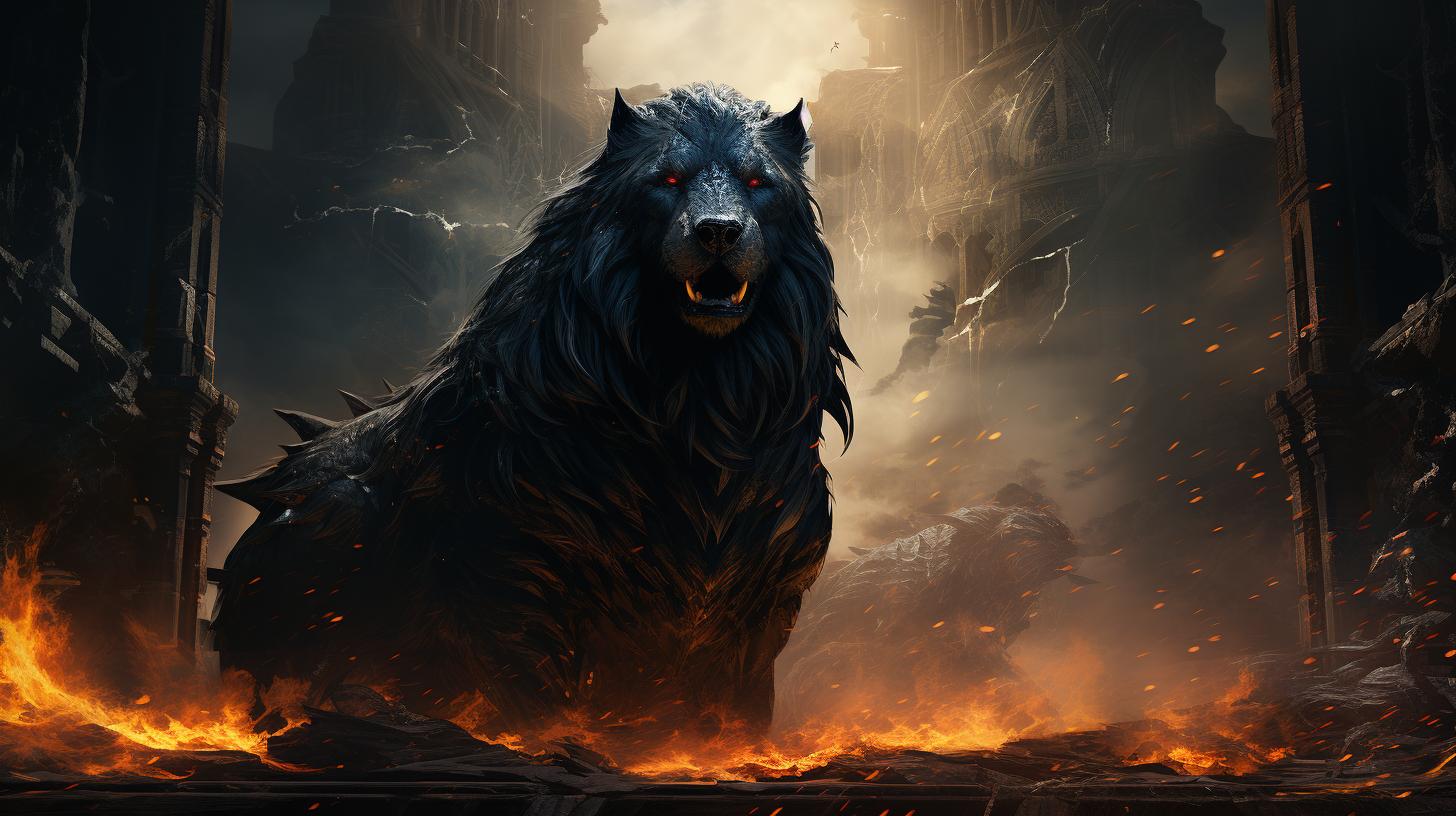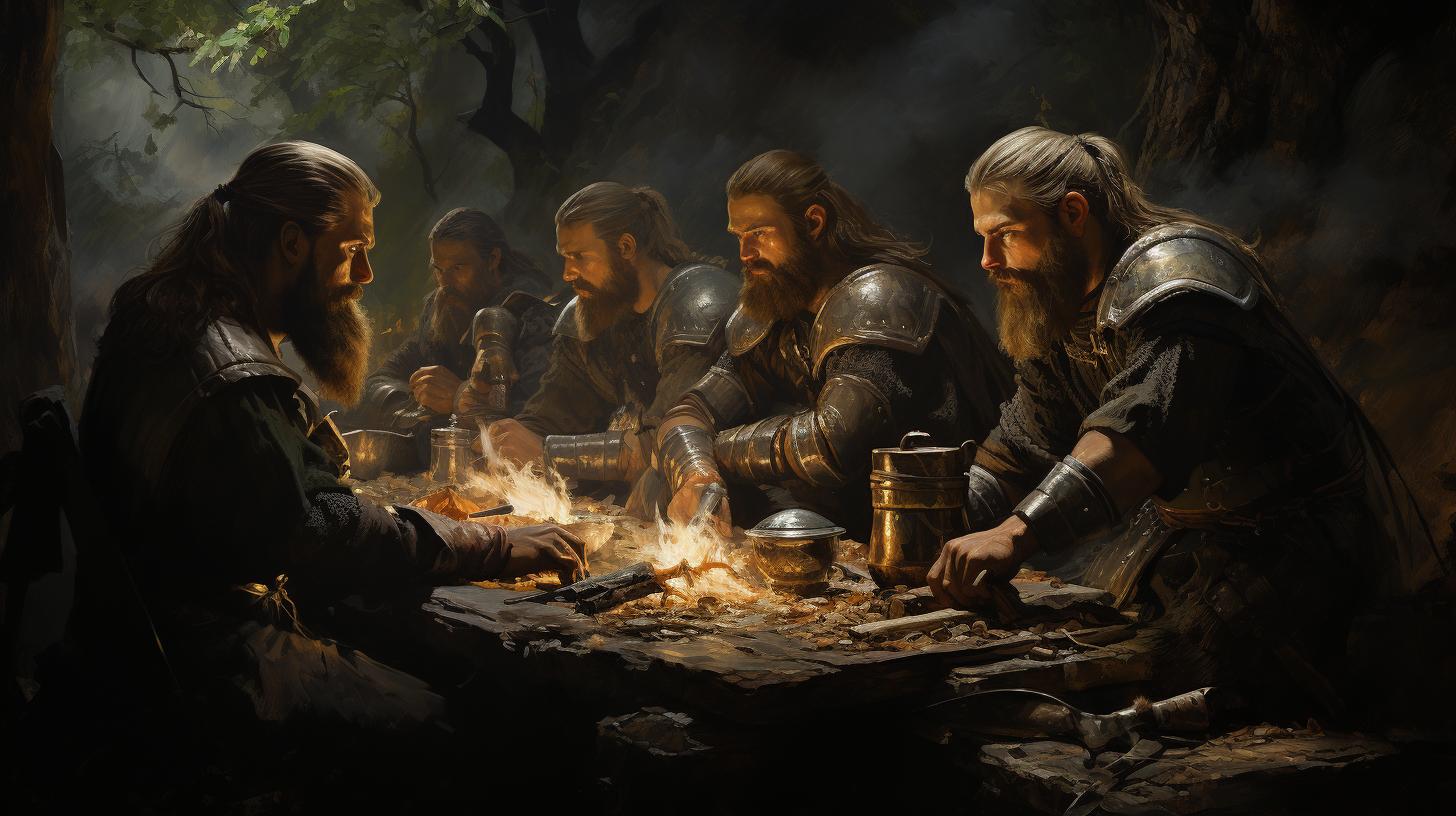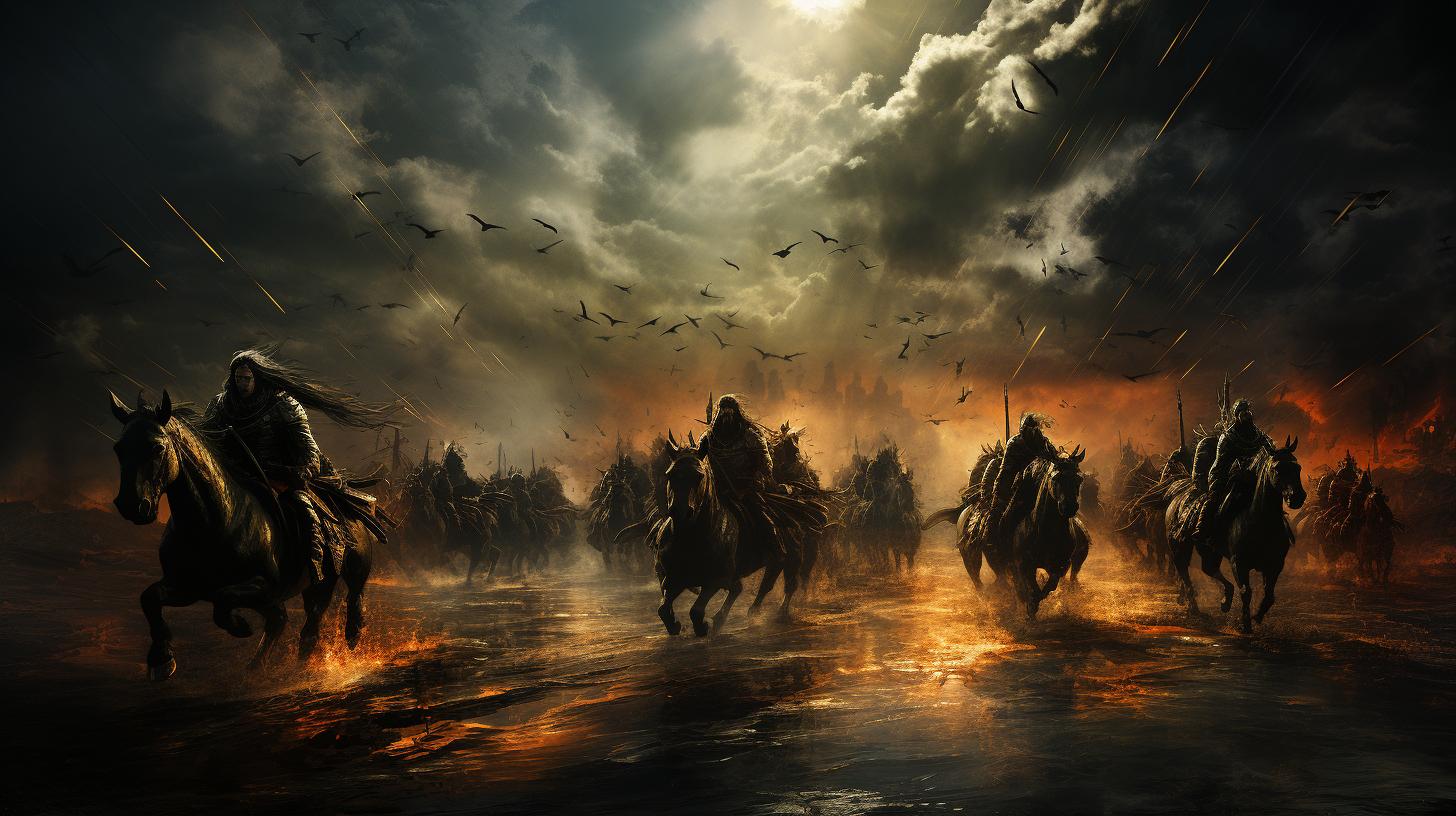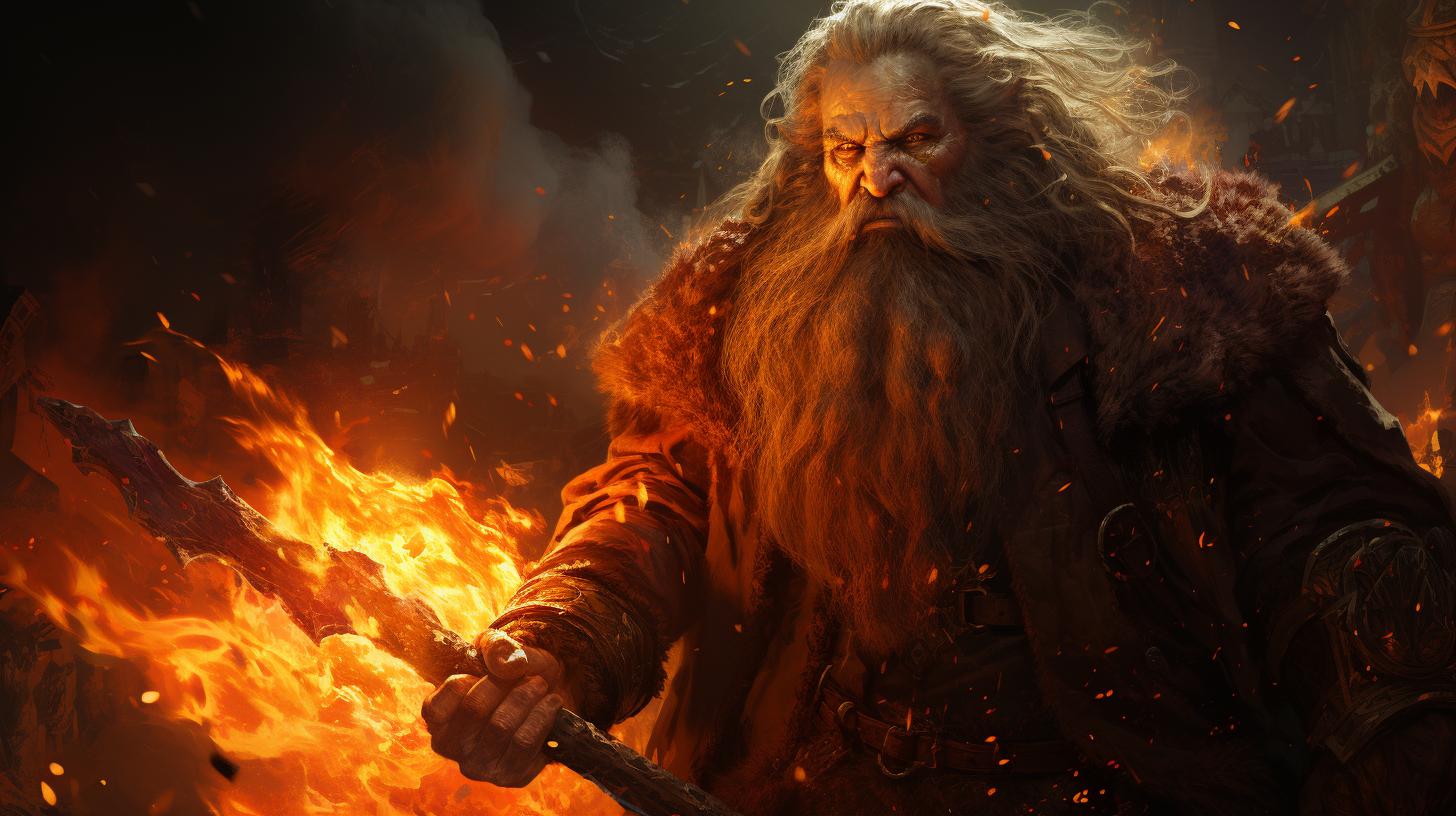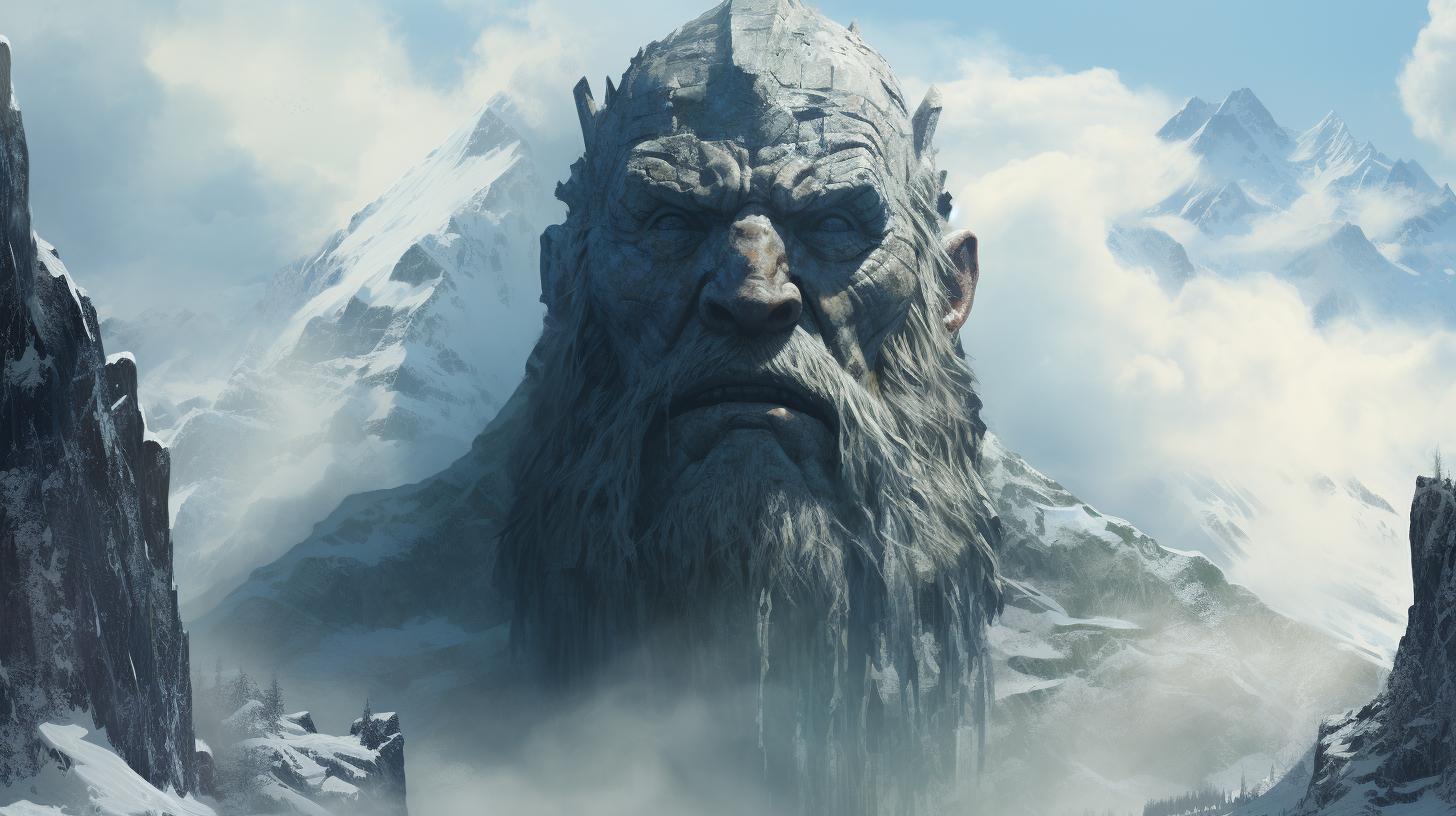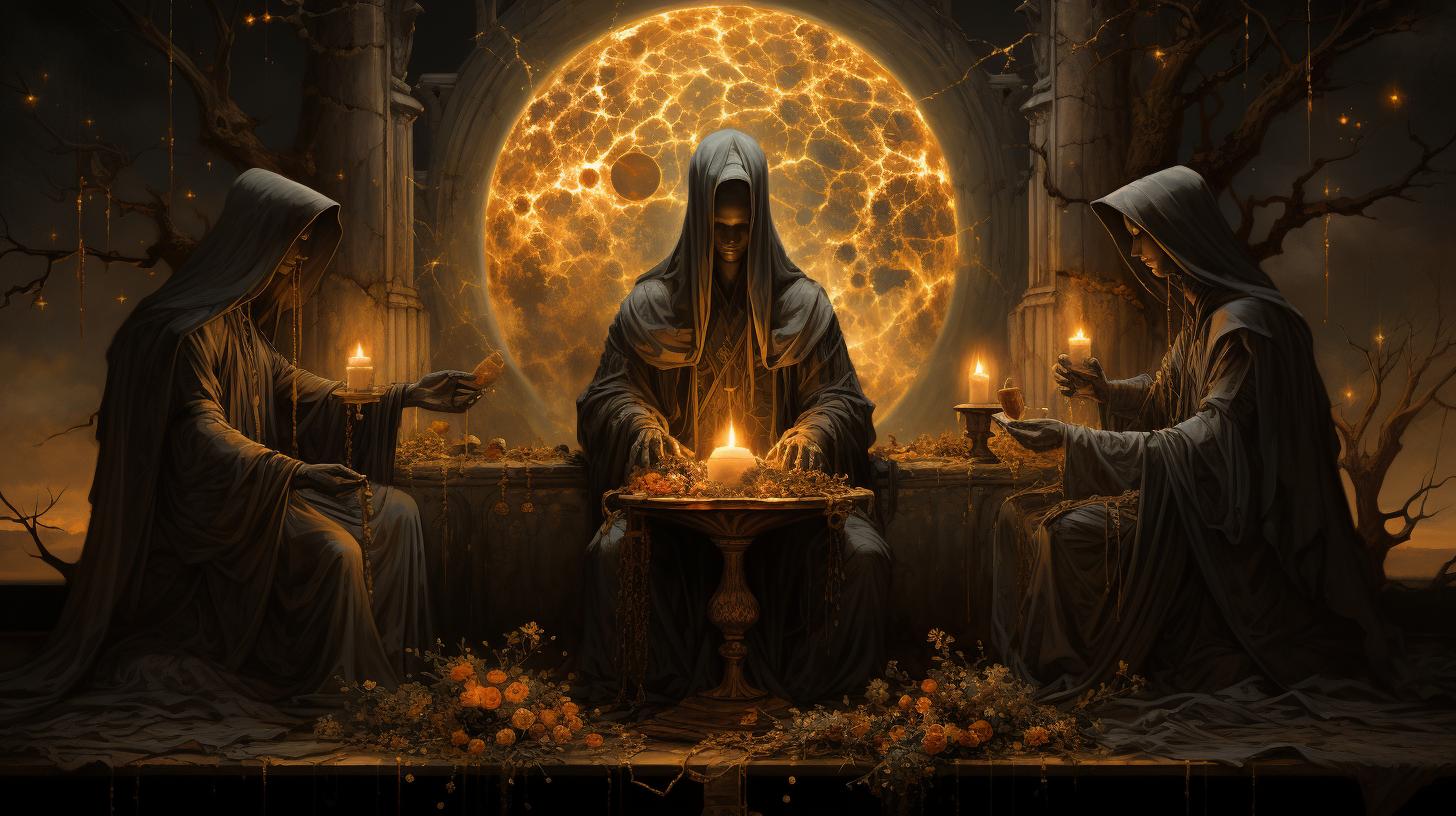Garmr in Norse Mythology: The Mighty Guardian of the Underworld

Garmr, in Norse mythology, is a powerful guardian associated with the underworld and destruction. Believed to be the largest and mightiest of all dogs, Garmr’s connection with Fenrir and his role in Ragnarok makes him significant in Norse mythology.
This article explores Garmr’s role as the guardian of the underworld, his physical description, and his similarities with other mythological guardians like Cerberus and Cŵn Annwn. Additionally, it delves into the limited historical sources and speculations surrounding Garmr, along with his enduring popularity in modern times.
Garmr: The Mighty Guardian of the Underworld
Garmr, a formidable figure in Norse mythology, serves as the powerful guardian of the underworld. This section explores Garmr’s crucial role in Norse mythology, shedding light on his significance and connections with other prominent mythological figures.
Garmr’s Role in Norse Mythology
In Norse mythology, Garmr is associated with the forces of destruction and serves as a guardian of the underworld. Though limited details exist regarding his ancient Nordic sources, he is believed to be the most immense and potent among dogs and wolves.
The Grímnismál poem provides a glimpse into his stature, while the Völuspá poem refers to his howling, chain-breaking, and escape, alluding to his involvement in Ragnarok, the catastrophic event bringing about the end of the cosmos.
Description and Symbolism of Garmr
Described as a monstrous dog with blood-stained fur, Garmr dwells in a cave called Gnipahellir, located near the entrance to Helheim, the realm of the dead. His physical manifestation symbolizes his terrifying nature as the guardian, preventing the living from entering and the dead from escaping the underworld.
Garmr’s Connection with Fenrir and Tyr
Garmr’s possible relation to Fenrir, the wolf bound by the gods who escapes during Ragnarok, further emphasizes his significance in Norse mythology. It has been suggested that Garmr could be the unnamed dog mentioned in the Baldrs Draumar poem, barking at Odin as he voyages to the underworld.
While the exact identity of this dog cannot be confirmed, the notion that Garmr serves as the guardian of the underworld’s entrance appears plausible. Additionally, Garmr’s connection with the god Tyr is particularly noteworthy, as they are destined to face each other in battle during Ragnarok.
According to the myths, Garmr will attack and slay Tyr, but in turn, will meet his demise at the god’s hands, symbolizing the eternal struggle between order and chaos.
Significance of Garmr’s Role in Ragnarok
Garmr’s role in Ragnarok holds immense significance in Norse mythology, as his release from chains contributes to the cosmic chaos unfolding during this apocalyptic event.
This cataclysmic battle between the deities and the forces of chaos ultimately leads to the end of the world, signifying the inevitability of cyclic renewal within Norse cosmology.
Wolves in Norse Mythology
The presence of wolves in Norse mythology represents chaos and destruction.
One notable wolf is Fenrir, the monstrous wolf of the apocalypse. Let’s explore the symbolism, characteristics, and significance of wolves in Norse mythology, focusing on Fenrir and its connection to Garmr.
Wolves in Norse Mythology: A Symbol of Chaos and Destruction
Wolves hold a prominent place in Norse mythology, symbolizing chaos, destruction, and primal forces. They embody the untamed and unpredictable aspects of the natural world. Wolves are often associated with darkness, fear, and relentless pursuit, evoking a sense of awe and fear in Norse culture.
Fenrir: The Monstrous Wolf of the Apocalypse
Fenrir, also known as Fenrisúlfr, is one of the most formidable beings in Norse mythology. As the offspring of the trickster god Loki and the giantess Angrboða, Fenrir grows into a monstrous wolf with insatiable appetite and incredible strength.
The gods, fearing his power and prophesying his role in the apocalypse, attempt to bind Fenrir but are ultimately unsuccessful.
Similarities and Differences Between Garmr and Fenrir
Garmr and Fenrir share some similarities, as both are powerful wolves associated with the Norse underworld. They play vital roles in the cataclysmic events of Ragnarok. However, Garmr is often depicted as a faithful guardian of the entrance to the underworld, while Fenrir represents uncontrolled chaos and destruction.
Despite their distinct natures, both wolves serve as harbingers of the end times and contribute to the cosmic upheaval of Ragnarok.
Garmr and Other Underworld Guardians
Comparison with Cerberus in Greek Mythology
Garmr, the fearsome guardian of the underworld in Norse mythology, shares intriguing similarities with Cerberus, the mythical three-headed dog in Greek mythology. Just as Garmr serves as the protector of Helheim, the realm of the dead, Cerberus guards the gates of the Greek underworld, preventing the living from entering and the dead from escaping.
Both creatures are depicted as monstrous dogs with ferocious appearances, representing the formidable nature of death and the afterlife.
However, while Garmr is described as the greatest and most powerful among dogs, Cerberus is often portrayed as a savage and uncontrollable beast.
Another notable difference lies in the number of heads they possess; Garmr is commonly depicted as a singular entity, whereas Cerberus famously boasts three heads. Despite these disparities, the underlying concept of the underworld guardian transcends cultural boundaries, symbolizing the boundary between life and death.
Similarities with Cŵn Annwn in Welsh Mythology
Exploring the Welsh mythology, one can draw parallels between Garmr and Cŵn Annwn, the mythical hunting dogs associated with the otherworldly realm of Annwn. Like Garmr, Cŵn Annwn fulfills the role of a guardian, preventing unwanted intrusion into the realm of the dead.
While Cŵn Annwn is often depicted as a pack of hounds rather than an individual creature, their collective purpose aligns with Garmr’s duty of safeguarding the realms beyond mortal existence.
It is worth noting that both Garmr and Cŵn Annwn are shrouded in mystery, with limited references in ancient texts.
Their connection to the underworld and their role as guardians highlight the universal belief in the existence of an afterlife and the need for protection against disturbances from the living.
Role of Underworld Guardians in Ragnarok
Within the context of Ragnarok, the cataclysmic event marking the end of the Norse world, Garmr and other underworld guardians play a crucial role in the cosmic upheaval.
As chaos ensues, Garmr, Fenrir, and other mythical creatures are unleashed from their chains, contributing to the destruction of the existing order.
Garmr’s significance lies in his participation in the final battle between the forces of chaos and the gods, specifically his destined encounter with the god Tyr. This confrontation symbolizes the perpetual struggle between order and chaos, as Tyr and Garmr ultimately meet their demise at each other’s hands.
The involvement of underworld guardians like Garmr underscores the apocalyptic nature of Ragnarok and the cyclical nature of creation and destruction within Norse mythology.
Garmr: Myth and Reality
The section ‘Garmr: Myth and Reality’ explores the historical and literary sources of Garmr’s mythology, interpretations and speculations about Garmr, and the modern depictions and popularity surrounding this fascinating figure in Norse mythology.
Historical and Literary Sources of Garmr’s Mythology
Garmr’s mythology is largely based on ancient Norse texts and poems, although there is limited direct information about him. References to Garmr can be found in poems such as Grímnismál and Völuspá, which provide insight into his size, power, and participation in Ragnarok.
Although these sources are scarce, they offer valuable glimpses into the captivating world of Garmr in Norse mythology.
Interpretations and Speculations about Garmr
The scarcity of information about Garmr has led to various interpretations and speculations among scholars and enthusiasts. Some propose that Garmr could be the unnamed dog mentioned in the poem Baldrs Draumar, while others explore connections between Garmr and other mythical beasts such as Fenrir. While these speculations cannot be confirmed, they contribute to the ongoing fascination and mystery surrounding Garmr in Norse mythology.
Modern Depictions and Popularity of Garmr
The allure of Garmr continues to captivate contemporary audiences, as seen in various modern depictions. Garmr’s portrayal in art, literature, and popular culture reflects his enduring popularity and resonance. From illustrations showcasing his monstrous form with blood-stained fur to Garmr’s presence in modern Norse-inspired fiction, Garmr’s mythology continues to inspire and fascinate people in the present day.
Garmr, the mighty guardian of the underworld, plays a crucial role in Norse mythology. According to ancient sources, Garmr is described as the largest and most powerful dog, associated with the forces of destruction.
His presence in the poem Grímnismál and his participation in Ragnarok, the catastrophic event that signifies the end of the cosmos, highlight his significance.
The connection between Garmr and Fenrir, the wolf bound by the gods who escapes during Ragnarok, further strengthens his importance.
Some speculate that Garmr might be the unnamed dog mentioned in Baldrs Draumar, who barks at Odin during his journey to the underworld. While it cannot be conclusively proven that they are the same being, the notion of Garmr as the guardian of the underworld’s entrance is plausible.
Continuity and Legacy of Garmr’s Mythology
Garmr’s impact extends beyond Norse mythology. His representation as a monstrous dog with blood-stained fur residing in the Gnipahellir cave near the entrance of Helheim creates imagery that captivates the imagination.
Additionally, Garmr’s portrayal as the formidable opponent of the god Tyr in the climactic battle of Ragnarok symbolizes the eternal struggle between order and chaos.
It is noteworthy that Garmr shares similarities with other underworld guardians, such as Cerberus in Greek mythology and Cŵn Annwn in Welsh mythology.
These guardian figures serve important roles in Ragnarok, contributing to the chaos that engulfs the cosmos. The themes of duality, destruction, and divine conflict make Garmr a complex and intriguing character within Norse mythology.
Legacy of Garmr’s Mythology
Garmr’s legend continues to thrive in contemporary culture. His portrayal as a fearsome guardian reflects the deep-rooted respect for strength and bravery in Viking culture. Garmr’s role as the protector of Helheim’s entrance highlights his significance in Norse mythology, influencing various artistic and literary works.
Despite the limited information available in ancient Norse sources, Garmr remains an enigmatic figure. Scholars and enthusiasts alike are fascinated by his character, his role in Ragnarok, and his connections to other mythological creatures.
Through vibrant retellings and interpretations, Garmr’s mythology lives on, inspiring further exploration and appreciation for the intricate world of Norse mythos.
.












